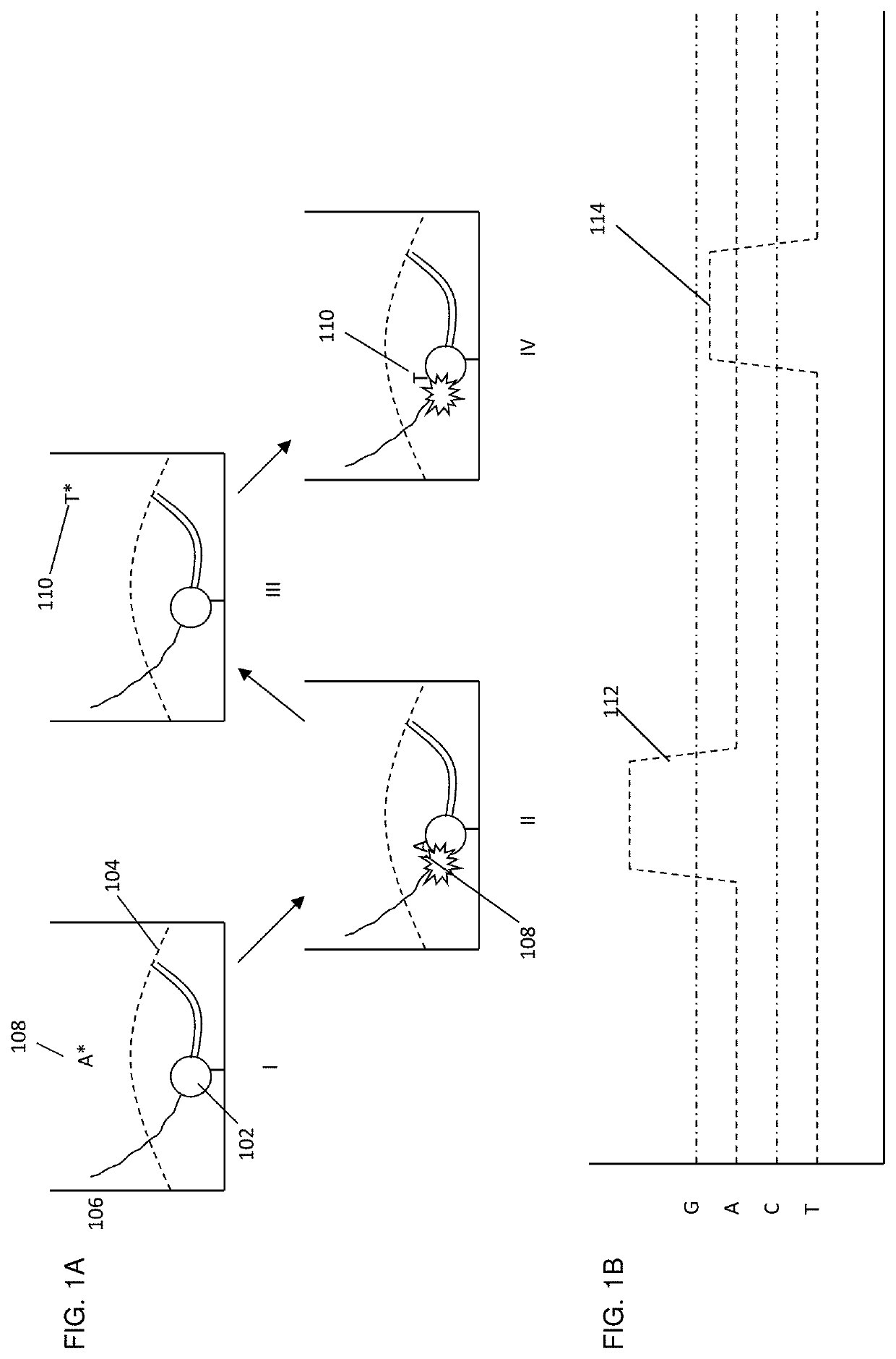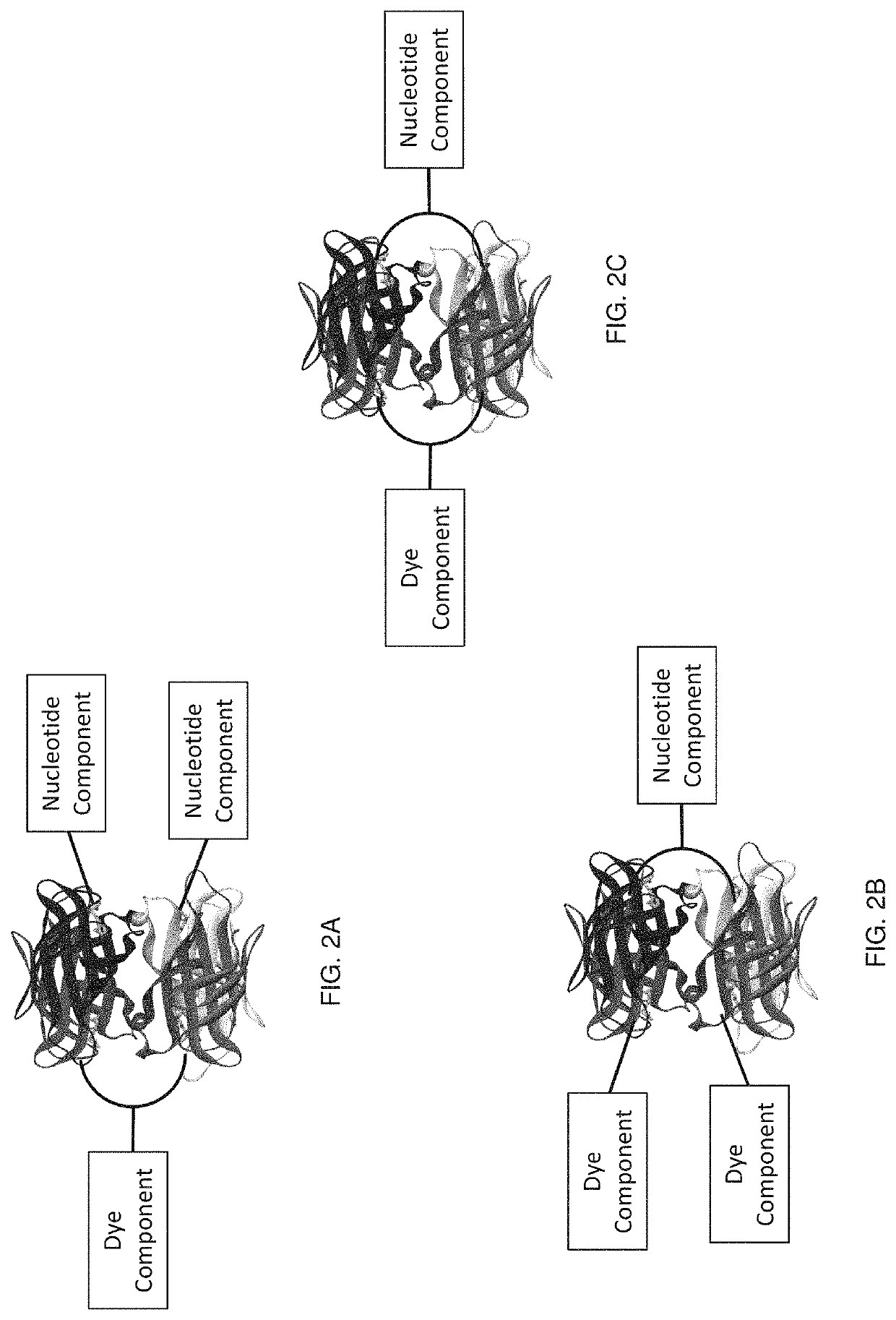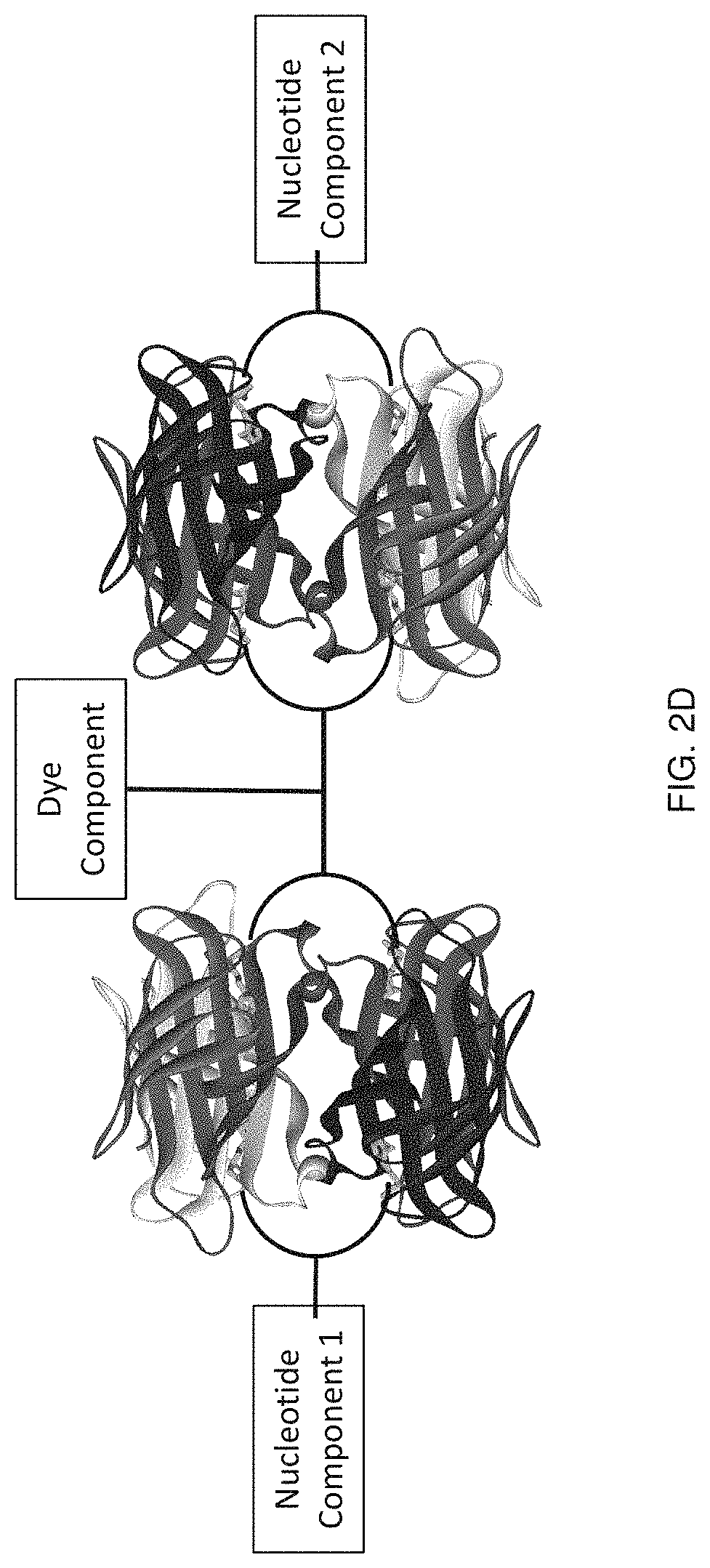Modified nucleotide reagents
a technology of nucleotide reagents and reagents, which is applied in the field of new modified nucleotide reagents, can solve the problems that the quality of sequencing data obtained can be affected by higher throughput, and achieve the effect of reducing km and increasing the enzymatic rate of nucleotide-dependent enzymes
- Summary
- Abstract
- Description
- Claims
- Application Information
AI Technical Summary
Benefits of technology
Problems solved by technology
Method used
Image
Examples
example 1
of Bis-Biotin Nucleotide Compounds
[0403]A variety of nucleotide compounds containing bis-biotin linkers have been synthesized for use in single-molecule real-time sequencing reactions. These compounds have been assembled with dye-labeled compounds, or their intermediate forms, that also contain bis-biotin linkers, using avidin proteins to create dye-labeled nucleotide analog complexes, for example as described in Example 2 and as illustrated in FIGS. 7A-7D and 7F. Additional examples of labeled nucleotide analogs that have been prepared according to these methods are graphically illustrated in FIGS. 3E-3O′. Many of the analogs demonstrate improved photostability, brightness, and reaction kinetics in automated DNA sequencing reactions involving DNA polymerase. See also U.S. Patent Application Publication No. 2013 / 0316912 A1. Use of the assembled fluorescent nucleotide reagent complexes in real-time sequencing reactions is described in Example 3.
[0404]The bis-biotin-containing nucleot...
example 2
of Dye-Labeled Nucleotide Analogs
[0417]The mononucleotide and dinucleotide compounds described above have been assembled into dye-labeled nucleotide analogs by combining the nucleotide compounds with one or more avidin proteins and one or more dye-labeled compounds or intermediates. For most of the kinetic experiments described in Example 3, the nucleotide compounds were assembled using a single avidin protein and a simple, unshielded dye-labeled compound such as dye-labeled compound illustrated graphically in FIG. 4A. Such assembly can be performed as described in U.S. Patent Application Publication No. 2013 / 0316912 A1. More complex analog structures have also been assembled, for example using the pathways shown in FIGS. 7A-7D and 7F. These analogs, such as the analogs depicted in FIG. 19A, have also been assessed in kinetic sequencing assays, as described in Example 3.
example 3
e Dye-Labeled Nucleotide Analogs in Real-Time Sequencing Reactions
[0418]Single-molecule real time sequencing reactions using the fluorescent nucleotide analogs described in Example 2 were carried out in a zero-mode waveguide (“ZMW”) array having 3000 discrete cores. The reactions were observed using a highly multiplexed confocal fluorescent microscope providing a targeted illumination profile, e.g., a separate spot for each core. See, e.g., U.S. Pat. No. 7,714,303, which is incorporated herein by reference in its entirety for all purposes. Fluorescent signals from the various ZMWs were detected using an EMCCD camera, and the signals were subjected to pulse recognition and base calling processes. See, e.g., U.S. Pat. No. 8,182,993, which is incorporated herein by reference in its entirety for all purposes. The sequencing was carried out generally as described in Eid, J. et al. (2009) Science 323:133-138, and the corresponding supplemental information included therewith.
[0419]For each...
PUM
 Login to View More
Login to View More Abstract
Description
Claims
Application Information
 Login to View More
Login to View More - R&D
- Intellectual Property
- Life Sciences
- Materials
- Tech Scout
- Unparalleled Data Quality
- Higher Quality Content
- 60% Fewer Hallucinations
Browse by: Latest US Patents, China's latest patents, Technical Efficacy Thesaurus, Application Domain, Technology Topic, Popular Technical Reports.
© 2025 PatSnap. All rights reserved.Legal|Privacy policy|Modern Slavery Act Transparency Statement|Sitemap|About US| Contact US: help@patsnap.com



